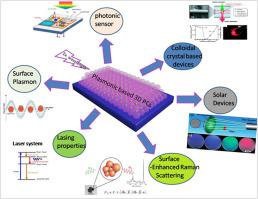Nano Today ( IF 17.4 ) Pub Date : 2021-01-21 , DOI: 10.1016/j.nantod.2020.101072 Ashish Yadav , Burak Gerislioglu , Arash Ahmadivand , Ajeet Kaushik , Gary J. Cheng , Zhengbiao Ouyang , Qing Wang , Vikram Singh Yadav , Yogendra Kumar Mishra , Yongling Wu , Yanjun Liu , Seeram RamaKrishna

|
The self-assembled plasmonic nano-enabled photonic crystals (PCs)have been studied as promising platforms to develop next-generation photonic and opto-electronic devices. In this review, we attempt to describe the fundamentals of self-assembled colloidal plasmonic nanostructures and various applications of such devices. Different important aspects, such as interaction between metal NPs (MNPs) and non-metal 3-D crystals, effect of NPs on the spectral properties of materials, the mechanism of plasmonic based PCs, and related challenges and their possible solutions have been demonstrated crucially. The advancements in the self-assembly based plasmonic PCs and their applications are discussed carefully. We believe that nano-enabled self-assembled plasmonic crystals are better candidates of nanostructures to advance photonic technologies with reduced form factor and high performance.
中文翻译:

用于高性能光子技术的基于等离激元的光子纳米晶体的受控自组装
自组装的等离子纳米纳米光子晶体(PC)已被研究为开发下一代光子和光电设备的有前途的平台。在这篇综述中,我们试图描述自组装胶体等离子体纳米结构的基本原理以及此类设备的各种应用。至关重要的方面已证明了不同的重要方面,例如金属NP(MNP)与非金属3-D晶体之间的相互作用,NP对材料光谱特性的影响,基于等离子体的PC的机理以及相关的挑战及其可能的解决方案。仔细讨论了基于自组装的等离子PC的进步及其应用。


























 京公网安备 11010802027423号
京公网安备 11010802027423号